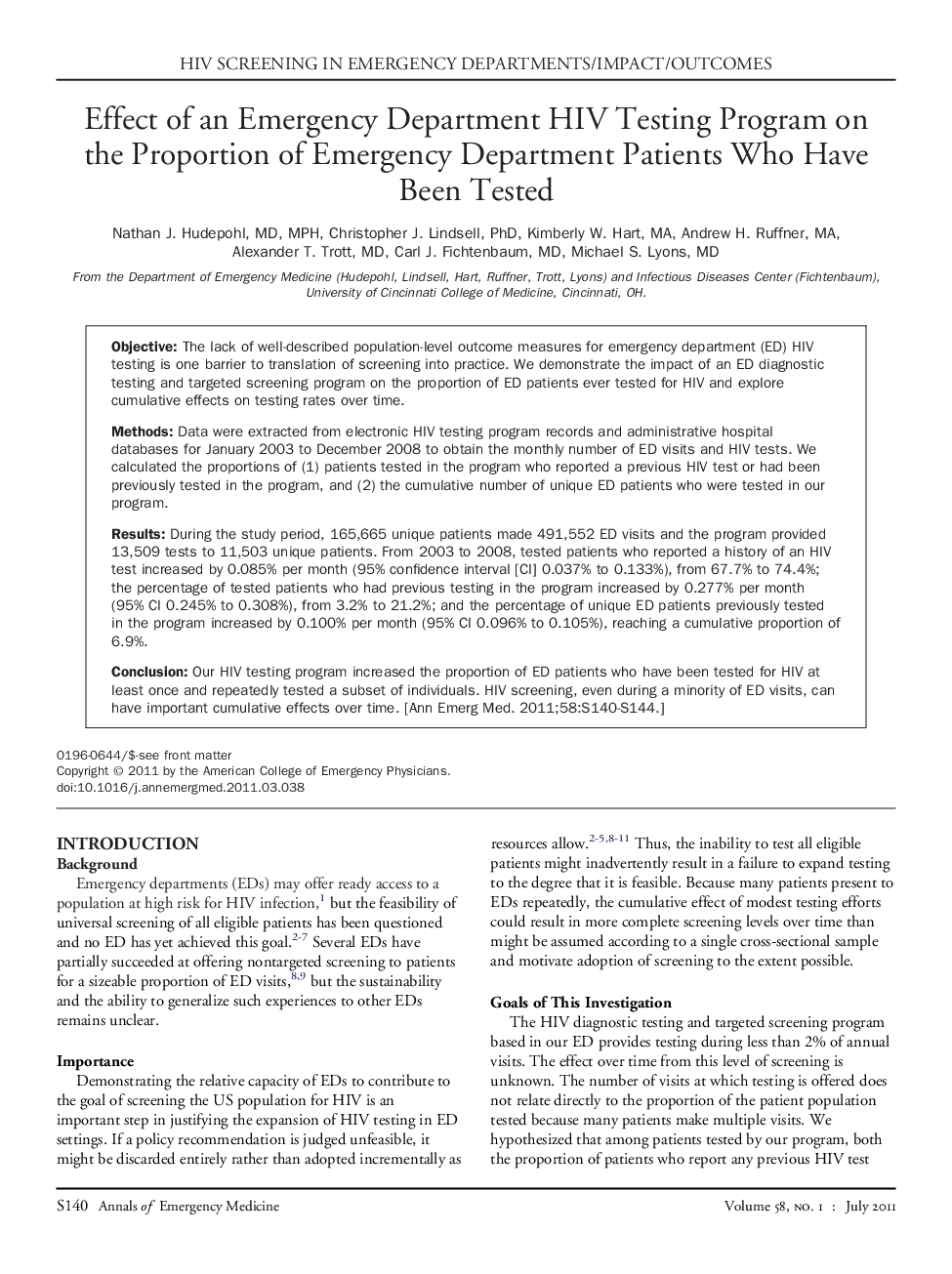| Article ID | Journal | Published Year | Pages | File Type |
|---|---|---|---|---|
| 3231255 | Annals of Emergency Medicine | 2011 | 5 Pages |
ObjectiveThe lack of well-described population-level outcome measures for emergency department (ED) HIV testing is one barrier to translation of screening into practice. We demonstrate the impact of an ED diagnostic testing and targeted screening program on the proportion of ED patients ever tested for HIV and explore cumulative effects on testing rates over time.MethodsData were extracted from electronic HIV testing program records and administrative hospital databases for January 2003 to December 2008 to obtain the monthly number of ED visits and HIV tests. We calculated the proportions of (1) patients tested in the program who reported a previous HIV test or had been previously tested in the program, and (2) the cumulative number of unique ED patients who were tested in our program.ResultsDuring the study period, 165,665 unique patients made 491,552 ED visits and the program provided 13,509 tests to 11,503 unique patients. From 2003 to 2008, tested patients who reported a history of an HIV test increased by 0.085% per month (95% confidence interval [CI] 0.037% to 0.133%), from 67.7% to 74.4%; the percentage of tested patients who had previous testing in the program increased by 0.277% per month (95% CI 0.245% to 0.308%), from 3.2% to 21.2%; and the percentage of unique ED patients previously tested in the program increased by 0.100% per month (95% CI 0.096% to 0.105%), reaching a cumulative proportion of 6.9%.ConclusionOur HIV testing program increased the proportion of ED patients who have been tested for HIV at least once and repeatedly tested a subset of individuals. HIV screening, even during a minority of ED visits, can have important cumulative effects over time.
